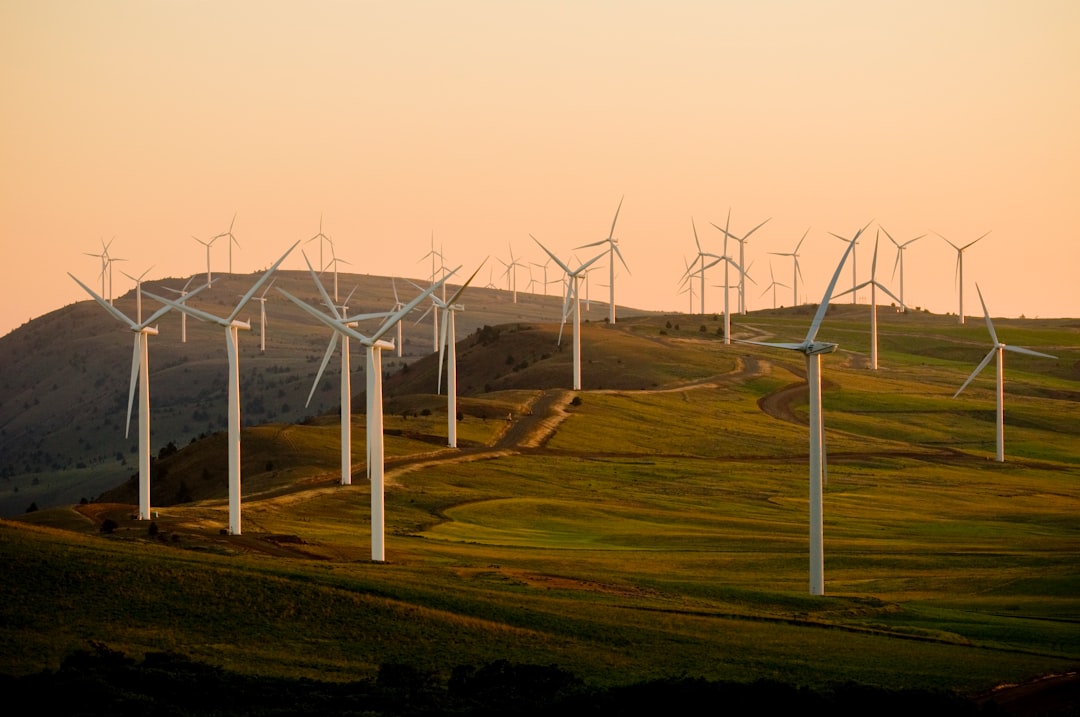Melting Ice, Shifting Wealth: The Arctic’s New Gold Rush

As Arctic ice melts at an alarming rate—2023 saw the sixth-lowest summer ice cover on record—new shipping lanes and untapped mineral resources are emerging. The Northern Sea Route, which shaves weeks off travel between Asia and Europe, had 77 commercial voyages in 2024, up from just 4 in 2011, according to the Arctic Council. Russia is investing billions in new ports and LNG terminals, hoping to cash in on this northern opportunity. However, local Indigenous communities are alarmed as their livelihoods tied to ice and wildlife are threatened. The U.S., Canada, and China have all increased their Arctic investments, with China labeling itself a “near-Arctic state” and spending over $1.5 billion in Arctic research since 2022. This rapid economic realignment is driven not by policy, but by the physics of a warming world. The scramble for the Arctic is already rewriting the financial maps of the globe’s northern edge.
Flooded Fields and Food Prices: Agriculture’s Unsteady Ground

The world’s breadbaskets are being redrawn by droughts and deluges. In 2023, the United States lost over $21 billion in agricultural output to climate-related disasters, the USDA reported. Parts of India, China, and the U.S. Midwest faced crop failures due to unprecedented heat waves, while southern Brazil’s soy harvest was devastated by a “1-in-50-year” flood. Insurance claims for farm damages soared by 35 percent in 2024, according to Munich Re. Meanwhile, Canada and parts of Scandinavia saw their growing seasons lengthen, leading to record wheat and barley yields. This northward shift is boosting some economies but leaving others in crisis. Food prices globally jumped by 15 percent in 2024, with climate shocks cited as the main driver.
Coastal Cities: The New Economic Fault Lines

Rising seas are bankrupting some of the world’s wealthiest coastal cities. Miami is spending over $5 billion on pumps, seawalls, and raising roads, yet property values in flood-prone neighborhoods fell by 12 percent in 2024, Zillow data shows. Jakarta, Indonesia, is relocating its capital due to constant flooding, with $33 billion allocated for the new city of Nusantara. In Europe, Venice suffered its worst flooding since 1966, costing $1.1 billion in damages in 2023. Insurance companies are pulling out of high-risk areas, leaving homeowners with few options. Global banks, like HSBC and BNP Paribas, have halved their lending to at-risk coastal real estate since 2022. The economic heart of many nations is now beating in unfamiliar, uphill territory.
Energy Winners and Losers: The Rise of Renewables

Fossil fuel giants are feeling the heat as renewables surge. Solar and wind accounted for 30 percent of global electricity generation in 2024, up from 25 percent in 2022, the International Energy Agency reports. China installed a record 240 gigawatts of solar power last year, while U.S. wind farms in Texas and Oklahoma now outproduce the state’s coal plants. Oil-dependent economies like Nigeria and Saudi Arabia are facing budget crises as demand projections for oil plateaued in 2024. Meanwhile, lithium, cobalt, and nickel—critical for batteries—saw prices double between 2022 and 2024, sparking mining booms in Australia, Chile, and the Democratic Republic of Congo. The axis of energy wealth is tilting, with green technology hubs like Shanghai and Berlin attracting billions in new investment.
Climate Migration: Cities on the Move

Extreme heat and water scarcity are driving millions to seek new homes. The United Nations reported that 33 million people were displaced by climate-related disasters in 2023 alone, a record high. In the U.S., Sun Belt states like Arizona and Nevada lost over 120,000 residents in 2024 due to prolonged drought and heatwaves, Census data reveals. Northern U.S. cities like Duluth and Buffalo are marketing themselves as “climate havens,” with home sales up 18 percent since 2022. Bangladesh, facing rising sea levels, saw 1 in 7 people relocate within the country last year. This mass movement is straining infrastructure in destination cities and threatening the economic stability of those left behind. The world’s economic map is now dotted with climate migration trails.
Insurance Industry: A Market in Upheaval

Insurers are recalculating risk as disasters multiply and intensify. Losses from climate-related catastrophes reached $140 billion in 2023, according to Swiss Re. In California, major insurers like State Farm and Allstate stopped issuing new homeowners’ policies in fire-prone regions, leaving over 500,000 properties unprotected. In Australia, premiums in flood zones rose by 50 percent in 2024, pricing out many families. Global reinsurers are hiking rates or withdrawing from entire markets, particularly in Southeast Asia and the Caribbean. Without affordable insurance, banks are reluctant to approve mortgages, stalling local economies. The insurance sector’s retreat is redrawing lines of economic opportunity and risk.
Supply Chains Rerouted by Storms and Drought

Climate shocks are disrupting global trade as never before. The Panama Canal’s worst drought in a century in 2023 forced a 40 percent cut in ship traffic, delaying goods from Asia to the Americas by weeks and costing shippers an estimated $370 million in extra fuel and fees. In 2024, Typhoon Doksuri damaged key ports in China, causing $2 billion in supply chain losses. U.S. railroads reported higher costs as Midwest floods washed out tracks and bridges, with logistics delays pushing up prices for cars and electronics. Companies like Apple and Toyota have begun diversifying their supplier networks, shifting some production to northern Europe and Canada. The cost of climate resilience is being built into the DNA of global commerce.
Tourism’s New Hotspots and Hardships

Traditional tourist destinations are being reshaped by heat, fires, and floods. In 2023, southern Europe experienced its hottest summer on record, with wildfires in Greece and Italy causing a 20 percent drop in bookings, according to the World Tourism Organization. Florida’s beaches saw a 17 percent decline in visitors in 2024 due to sargassum seaweed invasions and rising ocean temperatures. Meanwhile, Norway and Iceland have set new records for summer tourists as travelers seek cooler climates, with Iceland’s tourism revenue up 25 percent since 2022. Alpine resorts are adapting by offering mountain biking and hiking as snow becomes unreliable. The global tourism map is being redrawn, one heatwave at a time.
Finance and Investment: Risk Rewrites the Playbook

Investors are shifting capital away from climate-vulnerable assets. In 2024, global investment in sustainable funds topped $3.4 trillion, the highest ever, Morningstar reports. BlackRock and Vanguard have both increased their climate-risk screening, dropping shares in major fossil fuel and insurance companies exposed to climate extremes. Municipal bonds for Miami and New Orleans saw yields spike as investors grew wary of flood risk, increasing city borrowing costs by 40 percent over 2023 levels. Meanwhile, green bonds funding clean energy and resilience projects reached $500 billion in new issuance last year. Financial power is flowing increasingly toward adaptation and away from exposure.
Government Budgets Under Strain

Public spending on disaster response and adaptation is skyrocketing. The European Union allocated €120 billion for climate adaptation from 2023 to 2025, with major investments in flood defenses and wildfire prevention. California’s emergency budget for wildfires and drought response hit $8.2 billion in 2024, more than double its 2022 level. Developing countries are struggling; Pakistan’s reconstruction costs after the 2022 floods ballooned to $16 billion, and recovery remains incomplete. The World Bank estimates that climate adaptation could consume up to 7 percent of GDP annually for small island states by 2025. These mounting costs are forcing governments to rethink priorities and, in some cases, raise taxes or cut other services.
Tech Innovation: Racing Against the Heat

Technology is sprinting to keep up with climate’s economic impacts. In 2024, more than $70 billion was invested globally in climate tech startups, including AI-powered flood prediction, vertical farming, and next-generation batteries. Microsoft and Google announced new AI tools for modeling wildfire risks and optimizing renewable energy grids. Carbon capture facilities doubled worldwide since 2022, with major projects in Texas and the UK now pulling in over 10 million tons of CO2 annually. Startups like Climeworks and CarbonCure are attracting record funding rounds. Innovation is not just about profit, but about survival in a rapidly changing world.
- How Meteorologists Predict Storms Using Satellite Data - October 3, 2025
- What Causes Rainbows And Why They’re Always Curved - October 1, 2025
- 3 Industries Face Crushing New Tariffs as Trade War Escalates - September 28, 2025
